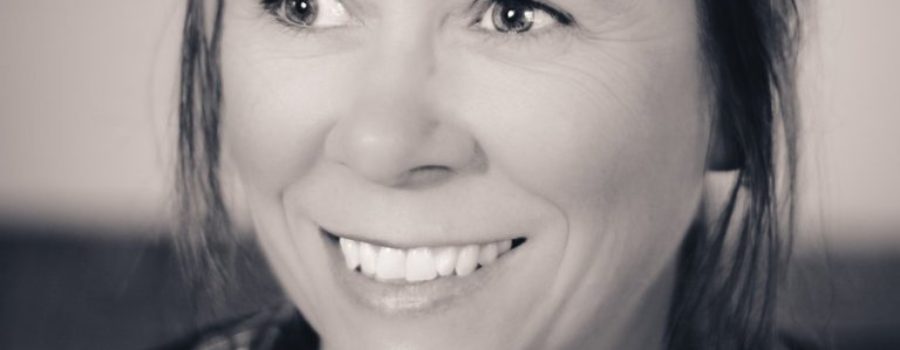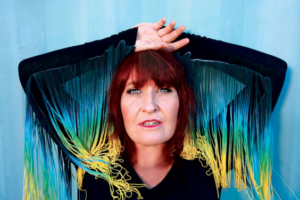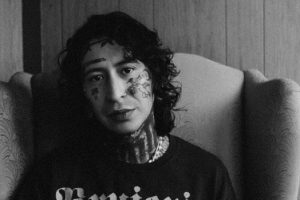Often times I felt as if I truly lived in the middle of nowhere. A small desert town in Southern California with more trouble than good. In reality, we were merely two hours (sans traffic) from Los Angeles, but as a teen – it felt a world away. Then I talked to Kim Barlow, a woman who spent two decades in the Yukon and I realized that I should’ve been appreciative of my tiny dot on the map because she in all honestly did live in the middle of absolute nowhere.
How she explains it though, it’s far from what one would expect. A land of nonconformists. I’m starting to think it was the inspiration behind the Island of Misfit Toys we’ve all come to know thanks to the annual tradition of watching Rudolph and Hermey dodge the norm at the North Pole. While it took her a second to find her groove there, once she did – it was nonstop. With a surprising music scene, she was able to find her voice. Today she reflects on that time and the idea of letting go with her latest single, “Whitehorse.” A song with a wonderful charm that one can find on her latest release, How to Let Go.
Kendra: After looking into the Yukon, I have to know why you went there and then decided to stay for 20 years…
Kim Barlow: There’s a thing called the Colourful Five Percent up north. The Yukon is a place where people end up, who don’t fit in other places. I, and many of the friends I made up there, felt a bit of that in our previous lives. So when we ended up in the Yukon, we had that aha! moment of realizing, “These are my people! They are weird, non-conformist socially awkward misfits just like me!” Add to that stunning wilderness and mountain ranges where people are outnumbered by moose, and that was the clincher for me. And so I stayed. For twenty years.
Kendra: For those still wondering why that’s interesting in these modern times, it’s because that place could be the definition of “rural.” With that, do you feel like you ever missed out on anything happening elsewhere during those years?
Kim Barlow: Oh yes. Pretty soon after I moved there the long winters started to eat at my soul and I drank too much and thought I should probably leave, but once you get enmeshed it’s hard to extract yourself. Plus, there was so much to love too. I started making records and touring. I had a kid at the same time. So my life has long been a cognitive dissonance between what I’d like to accomplish musically and what I am able to accomplish with limited time and the incredible isolation I placed myself in by living way up north.
Kendra: When you started making music, was it while in the Yukon? Is there a music scene there?
Kim Barlow: There’s a very vibrant music scene up there. Artists are often non-conformist misfits and so there is a higher-than-usual ratio of musicians and artists per capita. There are a lot of bars, so there are a lot of bands that play in the bars. And there is a fair bit of funding to support musicians to get out of the territory and tour their music across the country and around the world. It was a great place to get my start, in a weird way.
Kendra: Now when I read about “Whitehorse” I thought the song was going to have a more melancholy, somber tone. Then I hit play and in came a quick and almost quirky tune that was pleasant and warm. Where do you draw from musically when coming up with your overall sound?
Kim Barlow: I’m a music nerd and I draw on influences from all kinds of genres. I studied classical guitar as a kid and then learned banjo after university. I love contemporary classical composers, southern old-time music from the Appalachians, the traditional folk songs of the Maritimes where I live now, and folk and indie rock and pop. All those sounds work their way into my music, so it’s hard to pin it down I guess! When I wrote “Whitehorse” I tried to keep it simple and use the music to support the narrative and not distract from it. I wanted to take the listener on the same trip I had been on and make them feel like part of it. So I tried to make the music as emotionally evocative as possible. Also, it’s a nostalgic song but it’s also joyful – it was a good time.
Kendra: It’s also clear you’re a storyteller at heart. Does that stem from what you grew up listening to, or family get-togethers where stories were shared?
Kim Barlow: I never really thought about that! We are definitely storytellers and we have our well-worn chestnuts that get repeated at every family gathering. Also, I just love words. I love playing with the sounds of them, rhymes, and using words in ways that have a strong emotional impact. I went through a phase of listening to a lot of folk songs from the ‘60s and ‘70s like Joni Mitchell and Simon & Garfunkel, so I suppose that’s had an influence. These days I try to trim the verbiage down, but not always!
Kendra: We can find “Whitehorse” on your album, How to Let Go. With the lead single about letting go as well, is that the overall theme of the album?
Kim Barlow: For sure. A lot of the songs are about my family and domestic life. As I said, my musical career has always been balanced against those things. So there have been a lot of lessons in letting go. And then there is the letting go involved in parenting and watching the kids grow up. And some of the songs are a reckoning with where we are globally right now and how apocalyptic it all feels, and what do we do with that feeling? How do we carry on and try to progress as a society when there is so much division and hatred, and climate destruction and denial, all these hard things we hear about every day. I try to let go of the dread and keep dancing. I think that’s the most effective way to keep doing work that feels meaningful in some way.
Kendra: What do you have planned for 2019?
Kim Barlow: I’m booking shows again for the first time in over five years! Really excited to get out and share shows in March with Wax Mannequin. He’s a great and unusual, very musical songwriter from Hamilton Ontario. There is talk of festivals next summer, and possibly dragging my family along on a European tour.






